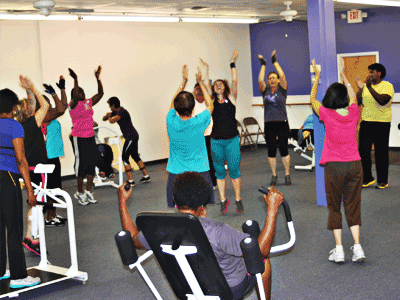An Introduction to Calorie Burning and Cardio Workouts
Calorie burning is a fundamental aspect of weight loss and fitness goals, serving as the primary mechanism through which the body expends energy. When engaging in physical activity, the body utilizes calories derived from carbohydrates, fats, and proteins to fuel muscle contractions and other physiological processes. The rate at which calories are burned can vary significantly based on the intensity and duration of the activity, as well as individual factors such as age, weight, and metabolism.
Cardio workouts, also known as cardiovascular exercises, play a crucial role in enhancing caloric expenditure due to their ability to elevate heart rate and sustain it over a period of time. These exercises not only improve heart and lung capacity but also contribute to overall endurance and stamina. Among the various types of cardio workouts, high-intensity interval training (HIIT), steady-state cardio, and low-impact exercises are distinguished for their unique benefits and effectiveness in burning calories.
High-Intensity Interval Training (HIIT) involves short bursts of intense activity followed by brief rest periods or lower-intensity exercise. This method is highly effective for calorie burning due to the increased post-exercise oxygen consumption (EPOC) it induces, leading to prolonged calorie burn even after the workout has concluded. It is particularly advantageous for individuals with time constraints, as HIIT sessions are often shorter yet more efficient.
On the other hand, steady-state cardio involves maintaining a consistent, moderate intensity over a longer duration. Activities such as jogging, cycling, and swimming fall into this category. Steady-state cardio helps build aerobic endurance and can be a suitable option for those who prefer a more constant pace.
Lastly, low-impact exercises like walking, elliptical training, and water aerobics are characterized by their gentler impact on joints. These activities are ideal for beginners, older adults, or individuals recovering from injury. Despite their lower intensity, they can still contribute significantly to overall calorie expenditure and cardiovascular health when performed regularly.
Understanding the basics of how calories are burned and the different types of cardio workouts sets the stage for exploring which exercises are most effective in burning the highest number of calories. This foundational knowledge empowers individuals to tailor their fitness routines to their personal goals and preferences, maximizing the benefits of their cardio workouts.
High-Intensity Interval Training (HIIT): Maximum Calorie Burn in Minimum Time
High-Intensity Interval Training (HIIT) has gained widespread popularity for its remarkable efficiency in maximizing calorie expenditure within a limited timeframe. This training approach involves alternating between short, intense bursts of exercise and lower-intensity recovery periods. By leveraging these intervals, HIIT amplifies the body's calorie burn rate both during and after the workout, making it one of the most effective methods of cardio for those aiming to optimize their workout results.
The principle behind HIIT is relatively straightforward but profoundly impactful. During high-intensity periods, the body operates at near maximal effort, significantly increasing the heart rate. The subsequent low-intensity recovery periods, although less demanding, maintain an elevated heart rate, ensuring continuous calorie burn. According to a study published in the Journal of Obesity, HIIT can burn 25-30% more calories than traditional forms of exercise like steady-state running or cycling in the same amount of time.
Popular HIIT exercises include sprints, burpees, and jump squats, each contributing uniquely to elevated calorie expenditure. Sprints, for example, boost muscle engagement and cardiovascular endurance, while burpees combine strength and aerobic components, increasing overall energy expenditure. Jump squats, on the other hand, target lower body strength and power, further enhancing caloric burn. The versatility of HIIT means that workouts can be easily modified to keep routines engaging and effective.
Besides calorie burning, HIIT workouts also improve cardiovascular health, increase aerobic and anaerobic endurance, and stimulate fat loss more effectively than moderate-intensity continuous exercises. The combination of these factors makes HIIT a superior choice for individuals seeking substantial fitness improvements in a time-efficient manner.
In essence, High-Intensity Interval Training stands out in the realm of cardio workouts due to its unparalleled efficiency and the significant caloric expenditure provided in a relatively short amount of time. Thus, incorporating HIIT into a regular fitness regime can lead to substantial physical benefits, enhancing both health and performance.
Steady-State Cardio: The Long Haul for Calorie Burning
Steady-state cardio, characterized by maintaining a consistent, moderate intensity over an extended period, is a cornerstone in the realm of fitness for those looking to burn calories. Engaging in activities such as running, cycling, and swimming for prolonged durations can lead to significant calorie expenditure, primarily because the body relies on aerobic metabolism to sustain these workouts. This continuous, steady effort allows individuals to burn a substantial number of calories due to the sustained energy demand.
During steady-state cardio, the body's energy expenditure is fairly consistent. Glycogen stores are utilized initially, but as these deplete, fat becomes a more significant fuel source. This extended process not only promotes weight loss but also improves cardiovascular endurance. For example, a 60-minute run at a moderate pace can burn upwards of 600 calories, depending on an individual's weight and fitness level. Similarly, an hour of steady cycling or swimming can burn comparable amounts of calories.
When comparing steady-state cardio to high-intensity interval training (HIIT), the differences in energy expenditure become evident. HIIT involves short bursts of intense activity followed by brief rest periods, leading to an "afterburn" effect where calories continue to be burned post-exercise. However, steady-state cardio, while not inducing as much post-exercise oxygen consumption, allows for long-term endurance building and can be sustained for longer periods, making it a viable option for individuals at all fitness levels.
To optimize steady-state workouts for maximum calorie burn, it is essential to maintain a pace that keeps the heart rate within 60-70% of its maximum. Incorporating inclines, resistance, or varied terrains can also enhance calorie burning. Furthermore, consistency is key; regular sessions ensure sustained caloric expenditure and cardiovascular benefits.
Despite its benefits, steady-state cardio is not without drawbacks. The repetitive nature of these exercises can lead to overuse injuries if not complemented with strength training or proper recovery. Additionally, for those with limited time, the lengthy duration may appear less efficient compared to shorter, intense workouts.
In conclusion, steady-state cardio remains a potent method for calorie burning, appealing to those who prefer sustained efforts over explosive intervals. Tailoring these workouts to one's fitness level and ensuring a balanced regimen can help mitigate potential drawbacks while maximizing health and fitness benefits.
Combining Cardio with Strength Training: The Synergistic Effect on Calorie Burn
Cardio exercises, renowned for their effectiveness in burning calories, achieve heightened results when integrated with strength training. This combination not only amplifies immediate calorie expenditure but also enhances long-term metabolic benefits. Research has shown that while cardio helps in burning calories during the activity, strength training plays a crucial role in increasing muscle mass. An increase in muscle mass boosts the resting metabolic rate, wherein your body continues to burn calories even at rest.
One significant advantage of coupling cardio with strength training is the post-exercise 'afterburn' effect, formally known as excess post-exercise oxygen consumption (EPOC). Following an intense workout, the body's metabolism remains elevated, leading to continued calorie burn post-exercise. Higher intensity strength training sessions contribute significantly to EPOC, allowing for prolonged calorie expenditure.
Implementing a balanced workout regimen involves strategically combining both forms of exercise. A practical approach includes starting with a high-intensity cardio session to elevate the heart rate, followed by resistance training exercises targeting major muscle groups. For example, a workout could include a 20-minute run or cycling session followed by a circuit of weighted squats, deadlifts, and bench presses. Alternating between cardio and strength training days is another effective method, ensuring ample recovery while maintaining a consistent activity level.
Moreover, strength training doesn't necessarily require heavy lifting or gym equipment; body-weight exercises such as push-ups, squats, and planks can also be effective. Paired with cardio routines like running, swimming, or interval training, these exercises facilitate a comprehensive fitness regimen aimed at maximizing calorie burn.
Integrating both cardio and strength training within your fitness routine not only optimizes calorie expenditure but also enhances muscle endurance, cardiovascular health, and overall physical fitness. The synergy between these two exercise modalities ensures a well-rounded approach to achieving fitness goals and promoting a healthy, active lifestyle.













